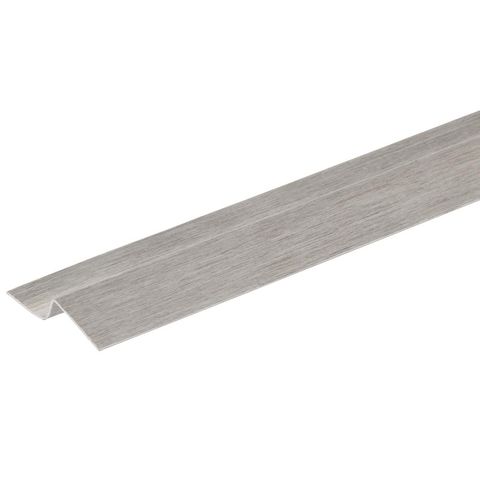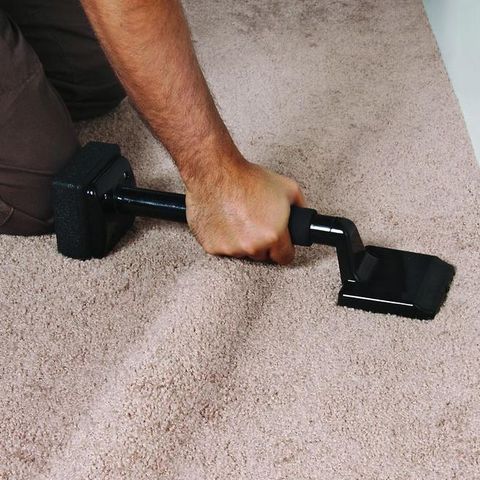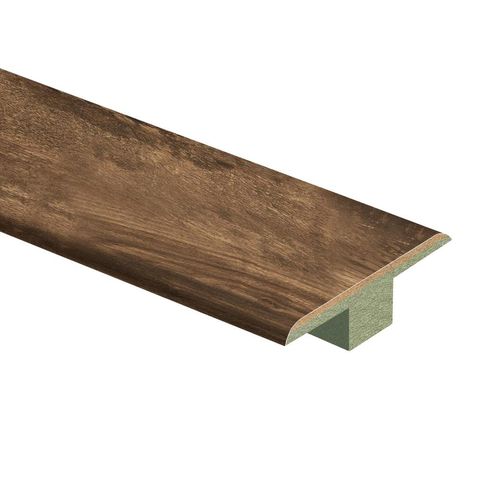Unless you’ve made the decision to use the same flooring throughout an entire house, there are moments of transition between materials that will need to be dealt with as seamlessly as possible. What might seem like a small detail is actually critical for both safety continuity in your home, and there are different types of tools that can be used — all of which can be found at The Home Depot.
When it comes to completing a transition point between carpet and a hard-surface like tile, laminate or hardwood, the Z-bar is often an ideal helper. Named because it’s shaped like (what else?) the letter “Z”, a Z-bar is a type of metal transition piece that creates a smooth, finished look for carpet as it comes up against a less plush surface.
Read on for the why, when and how of installing a Z-bar, as well as what other flooring transition pieces are out there.
So, why and when do you need a Z-bar?
Much like molding (see letter M for more on that), Z-bars are a final touch at the end of a flooring project that serves both aesthetic and practical purposes. Carpet that isn’t secured against a different material will eventually look frayed and unkempt, shortening its lifespan since it can’t be replaced piece-by-piece like a cracked tile. A flooring transition that hasn’t been secured is also more likely to be a trip-and-fall hazard, particularly for older populations or kids.
Installing a Z-bar takes elbow grease
Transitioning from one style of flooring to another typically happens between rooms, so your Z-bar is, more likely than not, going to need to be cut to fit inside a doorframe or entryway. (A Z-bar is also used frequently when carpet bumps up against an obstacle in the middle of a room, like a fireplace.) Cut the Z-bar using a hacksaw, and use a carpet trimmer to make a precise cut along the edge of the carpet that will be tucked and secured.
Sounds simple enough, right? But this step is where things can go awry quickly. You never, ever want to cut carpet too short: this can throw a wrench into your entire flooring project and leave too little material to make a firm barrier using the Z-bar. Leaving about ½” of carpet for the tucking process is the norm, but you can always trim it down more if you see you’ve left too much while pre-cutting. Sewing on extra? Well, that’s out of the question even for the handiest among us.
The bottom lip of the Z-bar — which often comes with gripper teeth — is then nailed or screwed (using head screws) into the subfloor right where the different flooring materials meet. Then, using a knee kicker or a lot of elbow grease, the carpet is stretched over the top of the Z-bar. (This requires more than a little bit of strength, so get ready for your workout of the day.) The top part of the carpet is then tucked underneath the top lip of the Z-bar and secured by a carpet tucker or hammering, creating an even flow between the two materials.
Yet another safety tip: whatever method you’re using to create a firm hold between the lip, carpet and floor, make sure to watch out for your fingers! There’s a lot of banging involved, and you don’t want to end up like a cartoon character with a throbbing thumb. (If all of this sounds like too much, consider hiring a professional!)
Z-bars aren’t the only flooring transition pieces
It’s worth mentioning that Z-bars aren’t the only kind of flooring transition pieces out there. Often made of metal, wood or laminate, transition strips and T-molding help ease the transition between one hard surface, like hardwood or laminate, and another hard surface, like tile. Threshold reducer molding, on the other hand, allows for higher-surface flooring to slope easily into a lower flooring without a jarring break in continuity.
No matter what flooring types are bumping into one another in your home, a transitional element is key to ensuring there’s as little friction as possible.












































